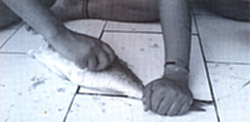Filed under: books

Archaeomalacology Revisited: Non-dietary use of molluscs in archaeological settings
edited by Canan Çakirlar
The past decade has witnessed a remarkable momentum in the advancement of archaeomalacological research but there is still a lot of room for progress. These ten papers are the second published proceedings of the archaeomalacology sessions organised by ICAZ (Mexico City, 2006). The contributions revisit important archaeological issues such as provenance of raw materials, dye production and the secondary uses of industrial shell waste, the role of shell artefacts in the symbolic world of diverse civilisations, technology and early cross-regional exchange networks. The papers testify to the merits of using state-of-the-art laboratory techniques to address archaeomalacological questions and demonstrate the interpretative value of integrating malacological expertise with experimental archaeology and detailed knowledge of archaeological context.
More info available from the publisher’s website
 Sandrine Bonnardin, 2009, La parure funéraire des premières sociétés agro-pastorales des Bassins parisien et rhénan: Rubané, Hinkelstein et Villeneuve-Saint-Germain. Paris: Société Préhistorique Française [Mémoire de la Société préhistorique française, 49].
Sandrine Bonnardin, 2009, La parure funéraire des premières sociétés agro-pastorales des Bassins parisien et rhénan: Rubané, Hinkelstein et Villeneuve-Saint-Germain. Paris: Société Préhistorique Française [Mémoire de la Société préhistorique française, 49].
This volume derives from Sandrine Bonnardin’s doctoral thesis “La parure funéraire du néolithique ancien en Bassins parisien et rhénan: Matériaux, techniques, fonctions et usage social” (Paris, 2004). Sandrine’s book is valuable for anyone interested in the technology and function of prehistoric ornaments, while the application of traceological analysis to the Neolithic ornaments is perhaps this study’s most important contribution.
The book’s summary translated in English:
During nearly seven centuries, whereas the Early Neolithic period progresses from the Rhenish basin to the Paris basin, the first agro-pastoral communities (Rubané, Hinkelstein, Villeneuve-Saint-Germain) will deposit in the tombs of their deceased members objects of adornment, worked according to more or less complex methods and in raw materials sometimes of very distant provenance (such as Spondylus).
These objects compose a varied adornment corpus. These jewels reflect the tastes and values of the groups which carried them. How were these objects handled? Were they used before being deposited in the tombs or can one envisage that some were produced exclusively for burial purposes? How were they worn? What was their relation to the body? Which body decorations did they form? But also, for whom were these ornaments manufactured? Where there any age-related categories/restrictions related to the ornament use? Finally, how did this corpus evolved during the Early Neolithic?
Throughout a study of the raw materials, a typological, technological and traceological analysis of the almost totality of the jewelry corpora of the Paris and Rhenish Basin, this study proposes to examine for the first time the technical, functional and social aspects of this material. The correlation of the results with the contextual data (position of the objects in relation to the skeleton, associations of objects, etc) make it possible to reconstitute the funerary “dresses” of the first peasants of the extreme West of moderate Europe. The results also highlight the expansion of the bonds which linked the Paris and the Rhenish Basin communities, while the Rubané culture is shredded to leave the place to the new cultural groups that emerged, the Hinkelstein and the Villeneuve-Saint-Germain. In the beginning of the fourth century b.C. the cultural relations have changed, and the ornaments constitute the echo of these changes.
The exhibition The Lost World of Old Europe: The Danube Valley, 5000 – 3500 BC, organized by the Institute for the Study of the Ancient World at New York University presents for the first time in USA the extraordinary finds from Bulgaria, the Republic of Moldova, and Romania.
The accompanying catalogue includes a chapter by Michel Louis Séfériadès on the Spondylus trade in Prehistoric Europe, available free to download.

Yvonne Lammers-Keijsers’s thesis on the shell and stone artefacts from Anse à la Gourde and Morel in Guadeloupe.
More details at http://research.leidenuniv.nl/index.php3?c=413
[Yvonne’s fascinating PhD is available freely as a pdf file and as a paperback at the Leiden University Press]
Reviews by Jonathan Last and Dimitrij Mleku & Mihael Budja on Chapman’s & Gaydarska’s book ‘Parts and Wholes: Fragmentation in Prehistoric Context’, where the case of the Spondylus gaederopus in Aegean and Balkan contexts is discussed.

Preistoria Alpina n. 40/2004 Supplemento n. 1
Conchiglie e archeologia contributi scientifici in occasione della mostra “Dentro la Conchiglia”
a cura di Maria A. Borrello
http://www.mtsn.tn.it/pubblicazioni/rivista.asp?codice=381
Filed under: books

A new edition on body adornment by Margo DeMello -though not much spondylus in it.


